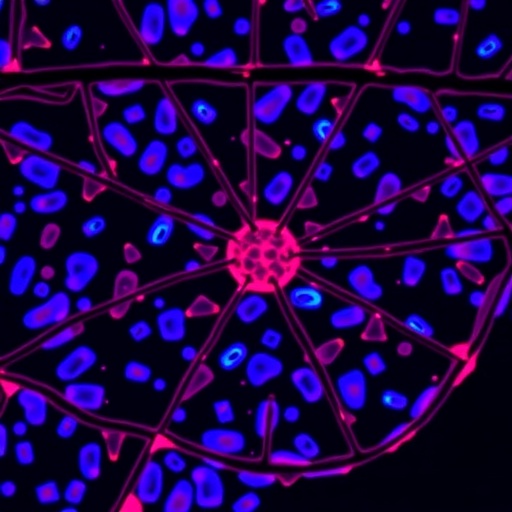
In a groundbreaking advancement for cancer immunotherapy, recent research has spotlighted TIGIT as a promising immune checkpoint target specifically relevant to breast cancer treatment. This revelation comes at a pivotal time when immunotherapy continues to revolutionize oncology, offering new hope beyond traditional surgery, radiation, and chemotherapy. The novel insights into the role of TIGIT deepen our understanding of the complex immunological interactions within the tumor microenvironment and open the door for more effective and personalized interventions in breast cancer management.
Immune checkpoints are molecules on immune cells that modulate immune responses, preventing overactivation that could damage normal tissues. However, many cancers exploit these checkpoints to avoid immune destruction, effectively cloaking themselves from the body’s natural defense mechanisms. The identification of TIGIT (T cell immunoreceptor with Ig and ITIM domains) as a critical immune checkpoint provides a new strategic target to disrupt this evasion. Unlike the more established checkpoints such as PD-1 or CTLA-4, TIGIT represents a fresh frontier, especially noted in the context of breast malignancies, which have historically presented significant immunotherapeutic challenges.
This latest research elucidates the expression profiles and functional mechanisms of TIGIT in breast tumor cells and infiltrating immune populations. It has been observed that TIGIT is significantly upregulated in the tumor microenvironment, particularly on exhausted T cells – immune cells that have diminished functionality due to chronic exposure to tumor antigens. The presence of TIGIT correlates strongly with immune suppression, enabling the tumor to escape detection and clearance. Targeting TIGIT may therefore reinvigorate anti-tumor immune responses, restoring the ability of T cells to mount robust assaults against malignant cells.
.adsslot_0s5x2F1j7l{width:728px !important;height:90px !important;}
@media(max-width:1199px){ .adsslot_0s5x2F1j7l{width:468px !important;height:60px !important;}
}
@media(max-width:767px){ .adsslot_0s5x2F1j7l{width:320px !important;height:50px !important;}
}
ADVERTISEMENT
From a molecular perspective, TIGIT belongs to the immunoglobulin superfamily and contains an immunoreceptor tyrosine-based inhibitory motif (ITIM), which transduces signals to dampen immune cell activity. When TIGIT binds to its ligands, including CD155, it triggers inhibitory pathways that diminish T cell and natural killer (NK) cell cytotoxic functions. This molecular interaction outlines an elegant regulatory circuit, fine-tuning immune homeostasis but unfortunately hijacked by cancer to support immune escape. Understanding these intricate signaling pathways at a detailed level is essential for designing drugs that can block TIGIT’s suppressive effects without provoking autoimmunity.
Importantly, the study’s data underscore that TIGIT expression is not uniform across all breast cancer subtypes, suggesting intrinsic biological heterogeneity. Its expression is notably elevated in certain triple-negative breast cancer (TNBC) cases – a subtype that currently lacks targeted therapies and carries a poor prognosis. This subtype-specific prevalence accentuates the potential clinical utility of TIGIT-targeted therapies in high-need patient populations, where immune checkpoint blockade could dramatically alter treatment paradigms.
The experimental approaches incorporated in this research involved comprehensive profiling of tumor-infiltrating lymphocytes (TILs) derived from breast cancer biopsies, alongside advanced flow cytometry and gene expression analyses. These methodologies revealed a distinct immunophenotype characterized by a high frequency of TIGIT-positive exhausted T cells. Furthermore, functional assays demonstrated that blockade of TIGIT using monoclonal antibodies restored T cell proliferation and cytokine secretion, confirming the therapeutic promise of TIGIT inhibition in reactivating anti-cancer immunity.
Mechanistically, the combination of TIGIT blockade with other immune checkpoint inhibitors, such as anti-PD-1 or anti-PD-L1 antibodies, showed synergistic effects in preclinical models. This finding advocates for combinational treatment strategies that could circumvent resistance mechanisms and achieve more durable responses. The rationale lies in comprehensive immune restoration by simultaneously targeting multiple suppressive pathways exploited by tumors, heightening immune-mediated tumor eradication.
Clinically, the implications of this research are profound. Breast cancer patients, particularly those in advanced stages or unresponsive to standard therapies, may soon benefit from clinical trials exploring TIGIT-targeted agents. Early-phase trials of anti-TIGIT antibodies in other malignancies have already shown safety and preliminary efficacy, bolstering confidence in translating these findings to breast cancer. Tailoring immunotherapeutic regimens based on TIGIT expression profiles may usher in a new era of precision oncology.
Moreover, this study supports the broader conceptual shift towards exploiting immune modulation as adjuncts to conventional treatments. Integrating TIGIT blockade with chemotherapy, radiation, or targeted therapies could potentiate therapeutic outcomes by transforming the immunosuppressive tumor milieu into one conducive to immune activation. Consequently, the architecture of breast cancer treatment could be reshaped by harnessing immune checkpoints like TIGIT as focal points of intervention.
These findings also stimulate future research avenues, including the potential identification of biomarkers predictive of response to TIGIT inhibitors. Deciphering the interplay between TIGIT and other immunoregulatory molecules may further refine patient selection and optimize therapeutic efficacy. Investigations into TIGIT’s role in immune cell subsets beyond T cells, such as dendritic cells and macrophages, could provide a more holistic understanding of its contribution to immune dynamics in cancer.
Technological advancements enabling single-cell sequencing and spatial transcriptomics are anticipated to deepen insights into TIGIT’s expression and function within the heterogeneous tumor microenvironment. Such detailed molecular cartography will illuminate how TIGIT-mediated suppression varies across cellular contexts, aiding in customizing immune interventions. The convergence of cutting-edge technology and immunobiology opens promising pathways to surmount the challenges posed by breast cancer’s immunological complexity.
In light of these developments, the scientific community is invigorated by the prospect that TIGIT represents not just another checkpoint but a gateway to overcoming immune resistance. This advances the frontiers of immunotherapy beyond its current limitations and expands the repertoire of actionable targets against breast cancer. The nuanced understanding of TIGIT’s dual role in immune regulation and cancer progression underscores the sophistication of immune-oncology research and its potential to translate into tangible clinical benefits.
In summary, targeting TIGIT emerges as a beacon of hope in the evolving landscape of breast cancer immunotherapy. By unmasking the tumor from its cloak of immune evasion, TIGIT blockade holds the potential to reinvigorate the immune system’s natural tumor surveillance and destruction mechanisms. Continued rigorous research, coupled with strategic clinical translation, is paramount to fully realize the transformative impact of TIGIT-directed therapies in improving survival and quality of life for breast cancer patients worldwide.
Subject of Research: Immune checkpoint modulation in breast cancer, focusing on TIGIT as a therapeutic target.
Article Title: TIGIT, as a potential immune checkpoint target for immunotherapy of breast cancer.
Article References:
Allela, O.Q.B., Shareef, A., Vadia, N. et al. TIGIT, as a potential immune checkpoint target for immunotherapy of breast cancer. Med Oncol 42, 407 (2025). https://doi.org/10.1007/s12032-025-02955-3
Image Credits: AI Generated
Tags: breast malignancies and immunotherapycancer immunotherapy advancementsimmune cell modulation mechanismsimmune evasion in cancerinnovative strategies in cancer managementnovel targets in breast cancer treatmentovercoming immunotherapeutic challengespersonalized interventions in oncologyresearch on TIGIT expression profilesT cell immunoreceptor with Ig and ITIM domainsTIGIT immune checkpoint in breast cancertumor microenvironment interactions




